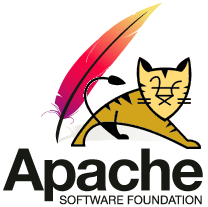

- #Apache tomcat exploit update#
- #Apache tomcat exploit upgrade#
- #Apache tomcat exploit software#
- #Apache tomcat exploit code#
#Apache tomcat exploit upgrade#
#Apache tomcat exploit update#

log_file_dir – contains the directory containing the payload.log_file_suffix – contains the file suffix.
#Apache tomcat exploit code#
#Apache tomcat exploit software#
The Apache Tomcat software is developed in an open and participatory environment and released under the Apache License version 2. The Apache Tomcat software is one of the most popular web server and Java Servlet Containers. According to the jrebel-2022-java-developer-productivity-report, Apache Tomcat was far and away the most popular Java application server at 48% of all responses: Log4Shell required no preconditions or specific configuration in order for it to be exploited.The attacker will not be able to exploit systems which are not connected to the internet.The attacker needs to know the address and the application’s endpoint.In contrast to Log4Shell, in order to exploit the Spring4Shell vulnerability: The vulnerability can be exploited remotely only if a Spring application is deployed as a WAR on the Apache Tomcat server and run on JDK 9 and higher, it can not be exploited in other mechanisms of Spring applications, for example Spring applications that use embedded Tomcat or Spring boot executable jar files. Spring4Shell is a zero-day Remote Code Execution (RCE) vulnerability caused by an error in the mechanism which uses client-provided data to update the properties of an object in the Spring MVC or Spring WebFlux application. In this blog post we will try to lay out the facts we know now and highlight the important aspects security practitioners and leaders should know in order to address the vulnerability. Some misconfussed it with the Spring Cloud vulnerability ( CVE-2022-22963) and the Spring Expression DoS vulnerability ( CVE-2022-22950).Īn older similar issue was exploited and patched in the past ( CVE-2010-1622), however, Spring became vulnerable again when used by JDK9+. The fact that several other Spring Related vulnerabilities were also published around the time of the Sprin4Shell publication has added to the confusion. That has spurred a debate among security researchers around how likely it is that real-world applications are affected by the vulnerability and how common those vulnerable applications are. As time went by, it became evident that the Spring4Shell vulnerability requires quite a few preconditions to be in place for a successful exploitation. CVE-2022-22965, AKA Spring4Shell was immediately associated to Log4Shell due to the similarity in the method of exploitation. Since the release of a proof-of-concept (PoC) exploit for a Remote Code Execution (RCE) in the Spring Framework by a Chinese security researcher (later removed from on GitHub due to Chinese legal issues) there has been a lot of conflicting information running around. By: Ofri Ouzan, Security Researcher, Rezilion


 0 kommentar(er)
0 kommentar(er)
